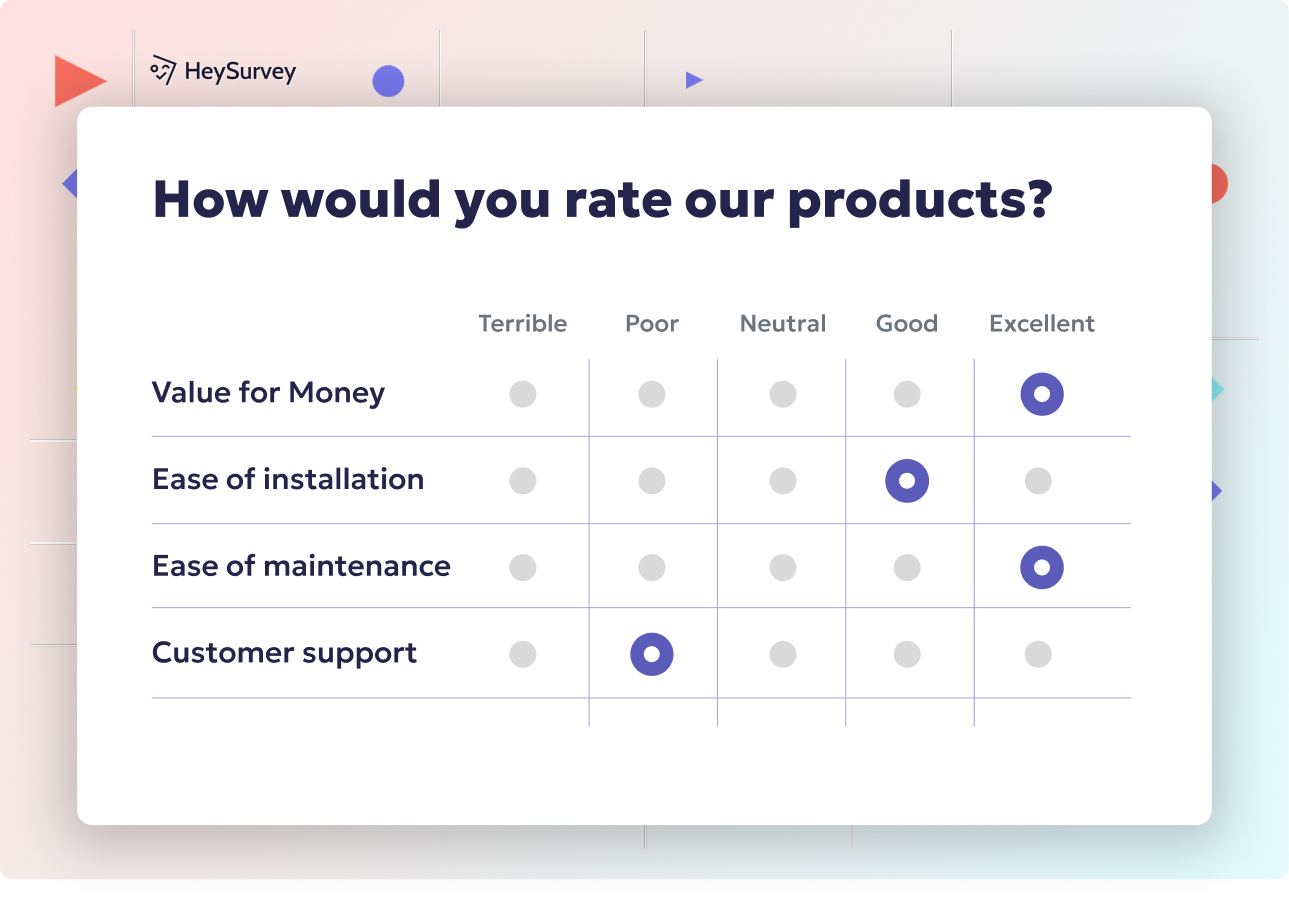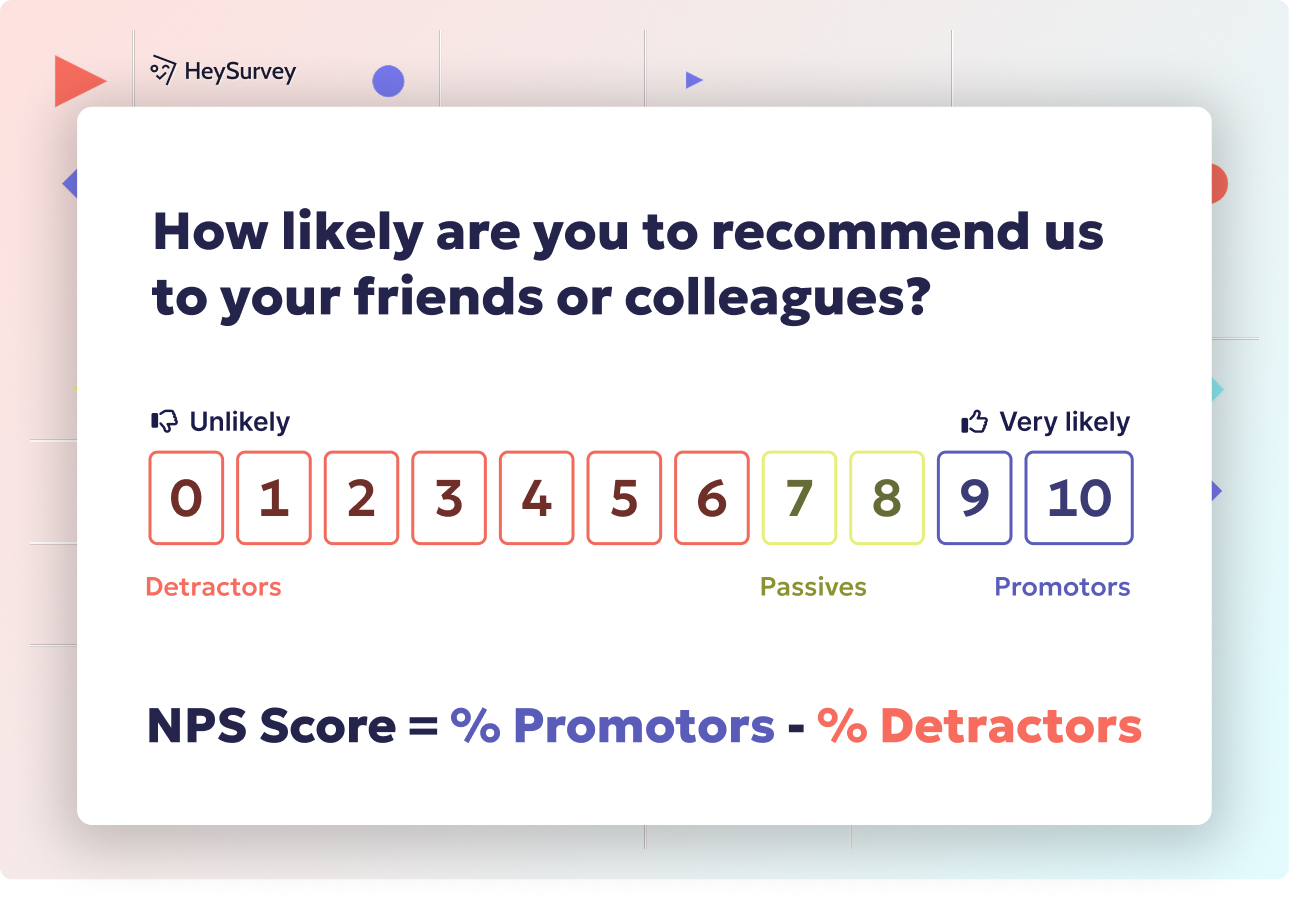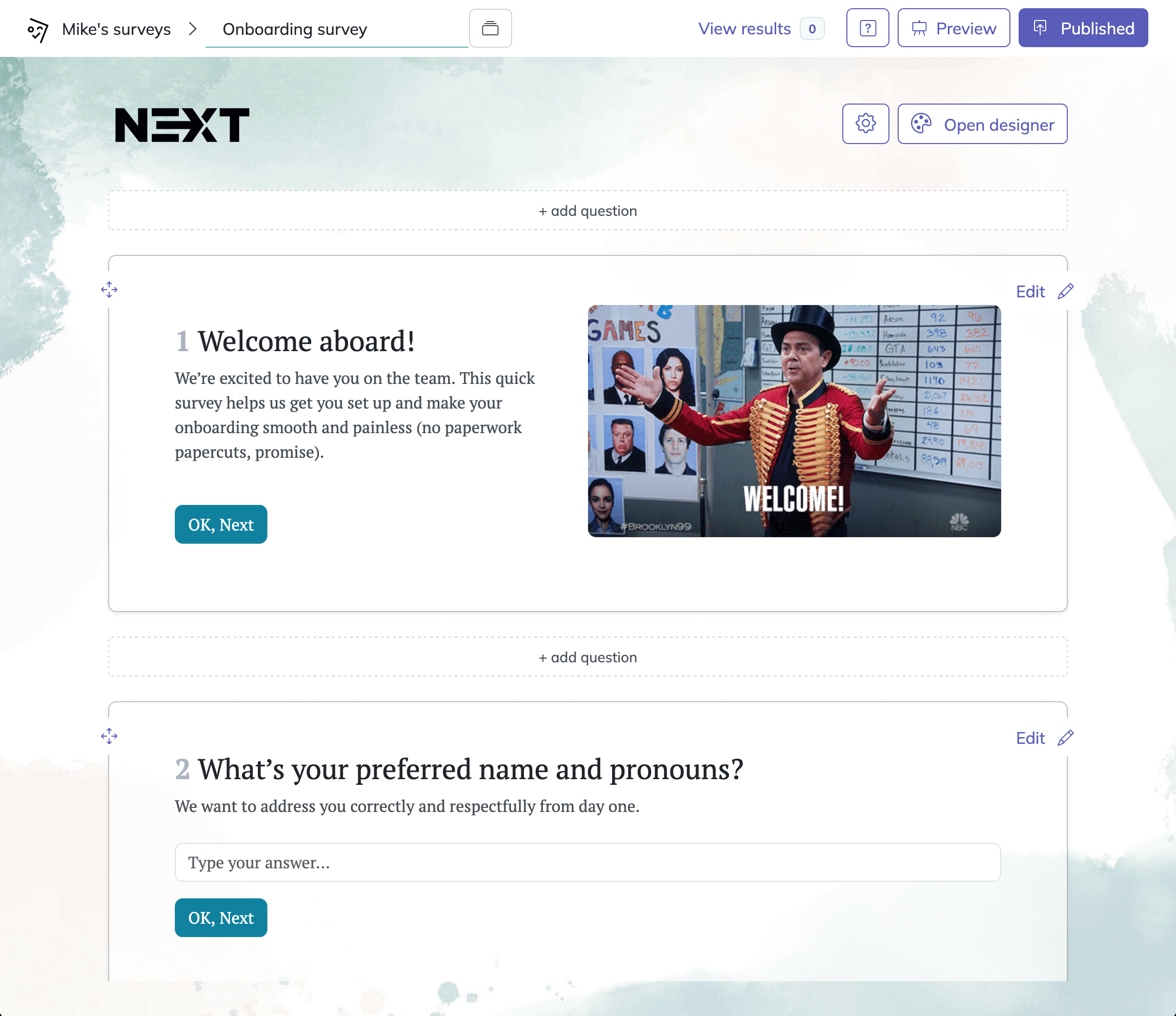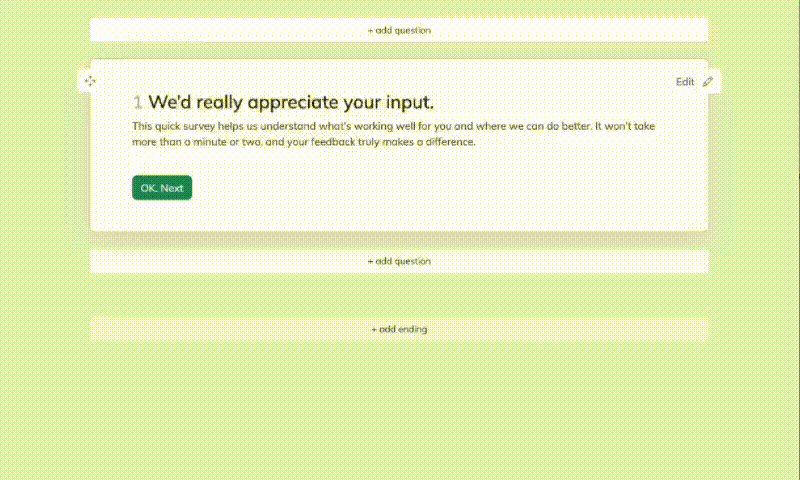29 Patient Survey Questions: Types, Uses & Best Practices
Discover 40 expert patient survey questions with detailed types, use-cases, and best practices to elevate healthcare feedback and experience.
In modern healthcare, patient survey questions—also known as patient feedback forms or healthcare questionnaires—are essential tools for measuring care quality and compliance. Healthcare organizations use these surveys to collect patient feedback after visits, annually, or post-discharge, ensuring they meet both patient needs and regulatory requirements. From patient satisfaction to telehealth service feedback, there are eight key types of patient survey questions every provider should know. Keep reading to discover each type, their best use-cases, and expert tips for designing questions your patients will actually want to answer.
Patient Satisfaction Surveys
What Are Patient Satisfaction Surveys?
Patient satisfaction surveys are designed to gauge how happy patients are with their healthcare experience. Often referred to as service quality surveys or clinic rating tools, these questionnaires capture the "gut feeling" that patients have after interacting with a healthcare provider. They go beyond clinical outcomes to explore the emotional, social, and practical sides of patient care.
Why & When to Use Patient Satisfaction Surveys
These surveys are perfect for routine outpatient visits, annual performance check-ins, or even benchmarking your clinic against competitors. Healthcare leaders rely on them to spot trends and to learn:
- Are we delivering overall satisfaction across the board?
- How does our team’s communication stack up to industry norms?
- Which parts of the patient journey shine, and which need some TLC?
Deploy patient satisfaction surveys right after a visit or on a set schedule (like every quarter) for ongoing insight.
5 Sample Questions
How would you rate your overall satisfaction with today’s visit?
How likely are you to recommend our clinic to friends or family?
Were your concerns fully addressed by the care team?
How would you rate the courtesy of our administrative staff?
Did you feel the time spent with the provider was adequate?
Survey Design Tips
For best results, use a 5-point Likert scale to quantify answers—think "Strongly Disagree" to "Strongly Agree." This makes it easy to benchmark over time and spot changes fast.
- Keep the language friendly and approachable.
- Short surveys (under 10 questions) are more likely to be completed.
- Invite open feedback at the end for extra insights.
Research indicates that the framing of patient satisfaction survey questions significantly influences responses, with negatively framed questions yielding lower satisfaction scores than positively framed ones. (ncbi.nlm.nih.gov)

How to Create Your Patient Survey with HeySurvey in 3 Easy Steps
Creating a patient survey with HeySurvey is surprisingly simple—even if you’re totally new to the platform. Just follow these three straightforward steps and you’ll be ready to collect valuable feedback in no time.
Step 1: Create a New Survey
- Head to HeySurvey and either start with a blank survey or pick one of the handy pre-built templates tailored for patient surveys.
- Give your survey an internal name so you can easily find it later.
- Voilà! Your survey shell is ready.
Step 2: Add Your Questions
- Click Add Question at the top or between existing questions to start building your questionnaire.
- Choose your question types: Likert scales for satisfaction, multiple-choice for demographics, or text for additional comments.
- Enter your patient survey questions—use the sample questions from this article as a quick copy-paste starting point.
- Mark questions as required if needed, and add descriptive text or images to clarify them.
Step 3: Publish Your Survey
- When your questions look good, hit Preview to see how your survey will appear to patients.
- Make any last-minute tweaks—HeySurvey lets you adjust colors, fonts, and layouts in the Designer Sidebar for the perfect look.
- Once happy, click Publish to get your sharable link or embed code. Remember, publishing requires a free account to track responses.
Bonus Steps for the Pros
Apply Branding
Add your logo and customize colors to make the survey feel like a seamless extension of your clinic’s brand. This builds patient trust and professionalism.
Define Settings
Set start/end dates, limit the number of responses, or redirect patients to a thank-you page after completion. You can also decide if respondents can view summarized results.
Skip Into Branches
Use branching logic to tailor the patient’s path through the survey—skip irrelevant questions and deliver a smoother experience based on their answers. This can boost completion rates and data quality.
Ready to start? Click the button below to open a patient survey template in HeySurvey and create your tailored survey in minutes!
Patient Experience (CAHPS & HCAHPS-Style) Surveys
What Are Patient Experience Surveys?
Patient experience surveys delve deeper than satisfaction, evaluating every touchpoint a patient has during care. Using a model similar to the CAHPS (Consumer Assessment of Healthcare Providers and Systems) surveys, and their hospital counterpart, HCAHPS, these tools aim for a comprehensive picture of care quality from the patient's perspective.
Why & When to Use Patient Experience Surveys
Hospitals and clinics turn to CAHPS-style surveys when they’re pursuing accreditation, seeking Medicare reimbursements, or preparing for public performance reporting. These surveys help organizations meet stringent regulatory requirements and boost their standing in quality-care rankings.
Deploy patient experience surveys after inpatient and outpatient stays, surgeries, or whenever you want to measure your care against national standards.
5 Sample Questions
During this visit, did providers explain things in a way you could understand?
How often did you receive help as soon as you wanted it?
Were your privacy and confidentiality respected?
How well did staff manage your pain or discomfort?
Before leaving, did you understand the symptoms or problems to watch for at home?
Survey Design Tips
Add demographic questions to the mix to identify disparities in patient experience and target improvement efforts.
- Use language that is clear, simple, and unbiased.
- Keep surveys anonymous when possible.
- Benchmark your results against national CAHPS databases for context.
Incorporating open-ended questions into patient experience surveys provides significant additional insights beyond closed-ended questions, enhancing understanding of patient care experiences. (pediatricnursing.org)
Post-Discharge Follow-Up Surveys
What Are Post-Discharge Follow-Up Surveys?
Transition-of-care feedback surveys, also known as post-discharge follow-up surveys, aim to ensure patients are well-supported after leaving the hospital. These tools play a big role in lowering 30-day readmission rates and smoothing the journey from hospital to home.
Why & When to Use Post-Discharge Follow-Up Surveys
Use these surveys 24–72 hours after a patient is discharged. This critical window is when confusion or unmet needs can spiral into adverse outcomes—think missed medications or unclear follow-up instructions. By catching problems early, providers can improve recovery, boost patient safety, and avoid costly readmissions.
5 Sample Questions
Do you understand your discharge medications and dosage instructions?
Have you scheduled your recommended follow-up appointment?
Were any barriers preventing you from filling prescriptions?
Do you know whom to call if symptoms worsen?
How confident do you feel in managing your recovery at home?
Survey Delivery Tips
Send these surveys by SMS or email for the fastest, highest completion rates.
- Personalize the message to boost trust and engagement.
- Keep the survey short and focused.
- Offer resources or direct lines for help if patients need urgent advice.
Telehealth Service Feedback Surveys
Why Telehealth Feedback Matters
Telehealth service feedback surveys have rocketed in importance as virtual care becomes mainstream. With more patients opting for video visits, understanding what works—and what doesn’t—has become crucial for refining digital workflows.
Why & When to Use Telehealth Service Feedback Surveys
Send these surveys immediately after a virtual visit. This “just-in-time” approach keeps feedback fresh and helps clinics refine technology, scheduling, and bedside manners tailored for the small screen.
5 Sample Questions
How easy was it to log in and connect to your video visit?
Did the provider appear attentive and engaged through the screen?
How would you rate audio and video quality during the session?
Did the virtual visit save you time compared to an in-person appointment?
Would you choose telehealth for future care needs?
Survey Implementation Tips
To create a seamless user experience, embed surveys directly inside your patient portal.
- Use clear, mobile-friendly layouts.
- Ask only relevant questions—skip what doesn’t apply.
- Analyze trends to fix glitches or improve patient instructions.
A nationwide survey found that 79% of patients were satisfied with their telehealth visit, and 73% expect to continue using telehealth services beyond the pandemic. (mhqp.org)
Treatment-Specific Outcome Surveys (Patient-Reported Outcome Measures – PROMs)
What Are Treatment-Specific Outcome Surveys?
Patient-Reported Outcome Measures (PROMs) are ultra-focused surveys that track health outcomes directly from the patient’s perspective. Whether it’s a knee replacement outcome survey or a general symptom tracker, PROMs zero in on what matters most: real-world improvement.
Why & When to Use PROMs
Deploy these before and after a specific treatment or procedure to assess patient progress and the actual effectiveness of care. PROMs can help your clinic qualify for alternative payment models and demonstrate value to payers, patients, and regulators.
5 Sample Questions
On a scale of 0–10, how would you rate your pain in the treated area today?
How much has your condition limited daily activities in the past week?
How satisfied are you with the treatment’s results so far?
Have you experienced any new side effects since treatment began?
Compared with before treatment, how would you rate your overall quality of life?
Survey Integration Tips
Link PROMs with your electronic health record (EHR) system for robust, longitudinal analysis.
- Automate reminders to maximize completion rates.
- Use results to inform shared decision-making discussions.
- Adjust care plans in real time based on patient-reported outcomes.
Appointment Scheduling & Access Surveys
Why Appointment Access Feedback Matters
Appointment scheduling and access surveys focus on the nuts and bolts of healthcare delivery—making sure patients can actually get in the door with minimal friction. These surveys capture vital insight on wait times and the booking process, areas that quietly shape the overall patient experience.
Why & When to Use Appointment Scheduling & Access Surveys
Distribute these after a patient first books or attends an appointment. The goal? Reduce costly no-shows and uncover process breakdowns that slow your clinic down.
5 Sample Questions
How easy was it to schedule your appointment?
Were you able to get an appointment at a convenient time?
How long did you wait past your scheduled time to see the provider?
How satisfied are you with the clarity of appointment reminders?
Did you experience any issues with insurance verification prior to your visit?
Survey Logic Tips
Deploy branching logic so patients skip irrelevant questions—nobody likes being grilled about insurance if they’re a self-pay patient!
- Offer surveys digitally right after booking.
- Keep the tone positive and problem-solving.
- Track trends in booking and access issues for process improvements.
Facility & Environment Feedback Surveys
Why Environment Feedback Is Essential
Facility and environment surveys unpack the unsung hero of patient satisfaction: the physical space itself. Cleanliness, safety, and comfort may sound simple, but they create a foundation of trust for every patient visit.
Why & When to Use Facility & Environment Feedback Surveys
Use these anytime, but especially after a patient’s first visit or during periodic facility reviews. Gather feedback to prioritize capital improvements, address safety concerns, and nail that critical first impression.
5 Sample Questions
How would you rate the cleanliness of the waiting area?
Did you find signage easy to follow within the facility?
How safe did you feel while on the premises?
Were restrooms adequately stocked and accessible?
How comfortable was the waiting room seating?
Survey Design Tips
Encourage patients to add optional photo uploads—pictures speak louder than words.
- Ask for feedback on both public and clinical spaces.
- Follow up on reported problems for rapid response.
- Review results with facilities management to plan upgrades.
Best Practices: Dos and Don’ts for Crafting Effective Patient Survey Questions
The Dos: Unlock Higher Response Rates & Better Data
- Write questions at a 6th-grade reading level so everyone can understand.
- Personalize invitations and use patients’ names to boost engagement.
- Always test surveys on mobile devices to ensure easy access.
- Offer anonymous mode so patients feel safe sharing honest feedback.
- Randomize question order to reduce bias.
- Keep data collection HIPAA-compliant for patient trust and safety.
The Don’ts: Avoid These Common Pitfalls
- Don’t use medical jargon or industry acronyms that confuse patients.
- Avoid double-barreled questions that ask about two things at once—keep it simple.
- Limit survey length to under 10 minutes to prevent drop-off.
- Never make text responses mandatory for every question; let people skip if needed.
- Respect cultural differences and sensitive topics in your wording.
Quick Tips for Success
- Use branching to only display relevant questions.
- Thank patients for their input and consider sharing survey outcomes.
- Analyze trends and act—feedback means nothing if it sits in a drawer!
Ready to move your patient care to the next level? Implementing these eight types of patient survey questions will help you identify blind spots, foster trust, and boost satisfaction across your organization. Start collecting patient feedback today to drive continuous improvement for patients and providers alike. Your journey to a happier, healthier healthcare experience starts now!
Related Health Survey Surveys

30+ Health Care Satisfaction Survey Questions: Templates & Tips
Explore 30 expert health care satisfaction survey questions across six types to boost patient fee...

31 Body Image Survey Questions: Types, Usage & Best Guide
Discover 35 expert body image survey questions across 7 proven types to measure body satisfaction...

31 Essential Domestic Violence Survey Questions: Types & Uses
Explore 30+ domestic violence survey questions covering types, uses, samples, and best practices ...

